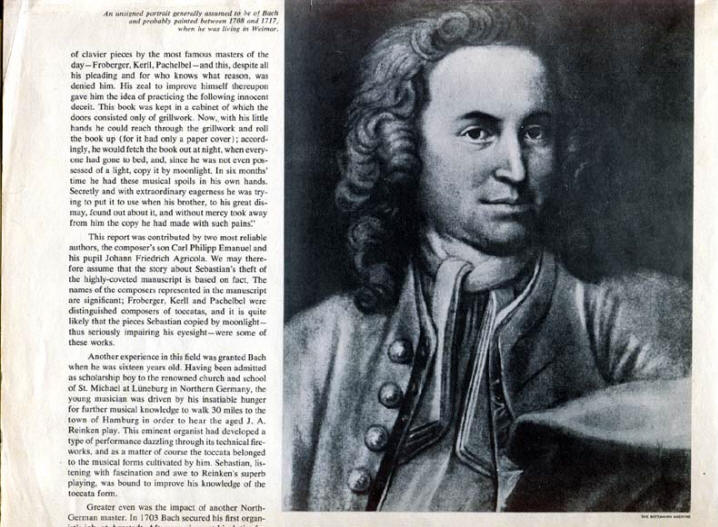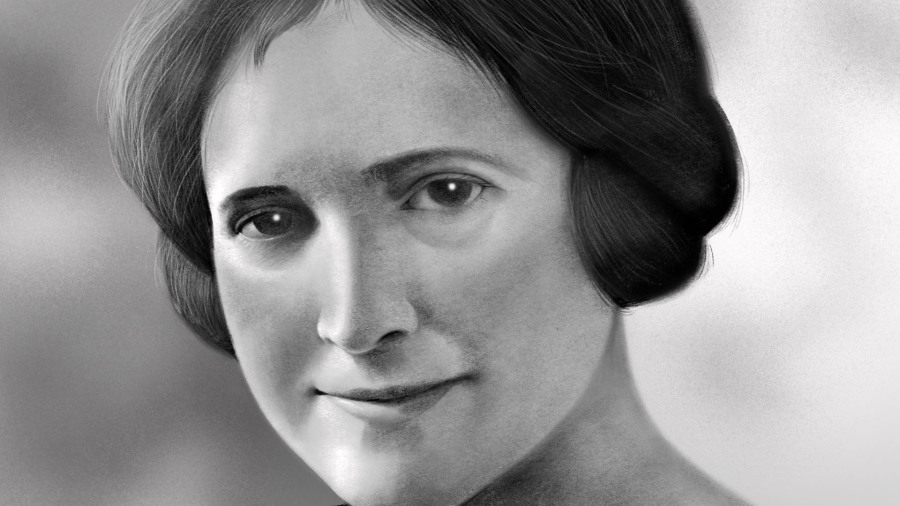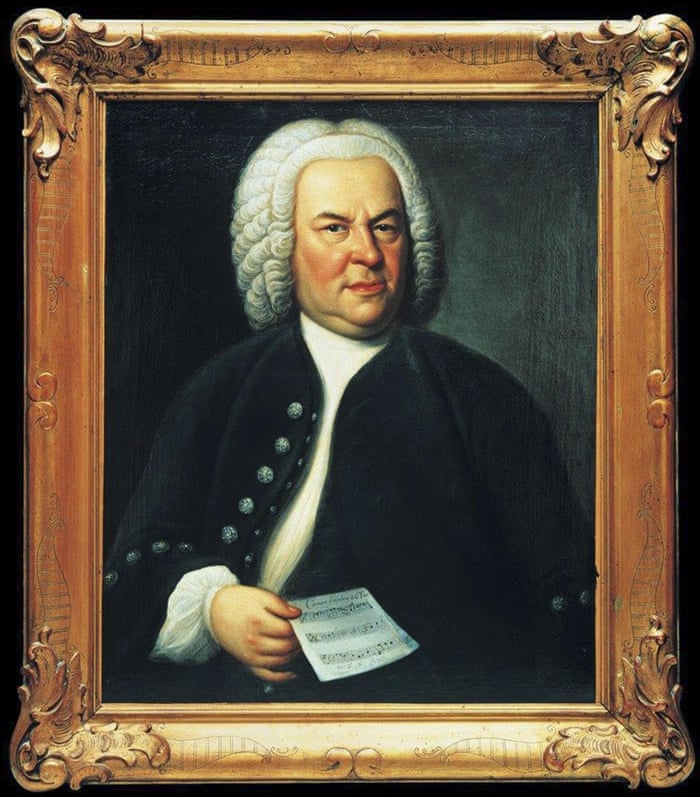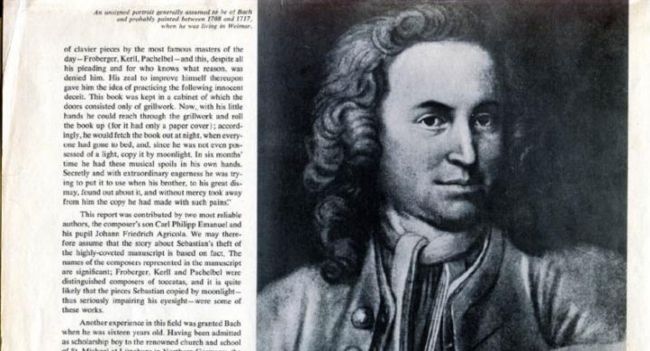About Johann Sebastian Bach
Opera. That’s the one style of music Johann Sebastian Bach didn’t advance.
All the other styles of music that were around during his era benefited from his genius, creativity, and studious approach.
Today, Bach’s likeness is part of classical music’s proverbial Mount Rushmore, but it wasn’t always that way.
For a long time, he was regulated to a composer’s composer.
That began to change in the 19th century when his popularity finally ascended to a level commensurate with his musical prowess.
Musicologists, and composers like Felix Mendelssohn, escorted Bach from the periphery to the mainstream. Now, his music is the foundation, both in appreciation and study, of classical music.
Bach is the greatest composer of the Baroque period as well as one of the greatest composers of all-time. He was the best keyboardist of his generation and an accomplished violinist and violist.
His compositions made inroads in several areas including four-part harmony, modulation, ornamentation, and counterpoint. He also wrote solos for instruments that were usually reserved for accompaniment (like the organ) and excelled at composing pieces for virtuosos.
Some of Bach’s most famous works are the Brandenburg Concertos, Goldberg Variations, St Matthew Passion, Mass in B minor, and The Well-Tempered Clavier.
Perhaps the most telling tribute to his greatness is the fact that his music appears thrice on the Voyager Golden Record. That’s a recording sent into outer space on NASA’s Voyagers probes. The record contains a sampling of sounds and music from Earth.
Bach is a member of a musical family. His father, as well as some uncles, cousins, and offspring were professional musicians and composers. Of course, none of the talented Bachs ever surpassed the greatness of Johann Sebastian.
Early Life

A young Bach. By Angermuseum Erfurt [Public domain],
via Wikimedia Commons
Bach was born on March 21, 1685 in the German city of Eisenach. His father, Johann Ambrosius Bach, was a musician. His mother is Maria Elisabeth Lämmerhirt. Bach had seven older siblings.
Tragedy struck the composer in 1694. Within an eight-month period, Bach lost both parents.
Just ten years old, Bach moved in with his eldest brother, who was employed as a church organist, Johann Christoph.
Bach received a robust musical education from his brother. He was able to copy scores, learn the clavichord, and study the works of major composers.
Education
In 1700, Bach went to Lüneburg to further his education at a very selective school, St. Michael’s. There, he sung in the choir, played the school’s three-manual organ, and met children of northern Germany’s aristocratic class.
Bach graduated from St. Michael’s in 1702. He then failed to land a job as organist for the town of Sangerhausen.
Being passed over for the position is the first of the many instances in which Bach’s genius went unappreciated by the musical establishment of his day.
Weimar
In early 1703, he did become a court musician in the German city of Weimar for Duke Johann Ernst III. Music historians don’t know exactly what Bach did for the Duke during his seven months of employment, but they believe his duties were banal and basic.
In Weimar, Bach excelled at the organ. His reputation on the keyboards was so positive that he was asked to inspect a new organ and perform its first public performance.
The organ in question was installed at a church that now carries Bach’s name. The church is in Arnstadt, a town about 19 miles from Weimar.
Bach was eventually hired by the church.
He received a nice salary, the opportunity to play their new organ, and the responsibility of directing their choir (which Bach found subpar).
In 1707, the relationship with his employer strained. He moved on by becoming the organist at the Blasius Church in Mühlhausen.

Bach’s first wife Maria Barbara Bach, Bach, Bach’s second wife Anna Magdalena.
From the National Review.
Marriage
Later in 1708, Bach married Maria Barbara Bach. We were not hasty in changing her last name.
Maria’s maiden name was Bach; she was Johann’s second cousin.
Bach returned to Weimar in 1708 to serve as organist and eventually director of music.
In Weimar, Bach produced kids and music.
The couple begat Catharina Dorothea, Wilhelm Friedemann, Carl Philipp Emanuel, and Johann Gottfried Bernhard.
They had three more children who died before reaching their first birthday.
On the music side, Bach wrote several works for orchestra and keyboard.
That includes preludes and fugues which he later published as part of his seminal offering Das Wohltemperierte Klavier or The Well-Tempered Clavier.
Once again, his relationship with his employer soured. This time, to the point where he was jailed—albeit for just under a month.
Leopold
In 1717, Bach became director of music for Leopold, Prince of Anhalt-Köthen. He was well compensated, given much latitude, and was greatly appreciated.
Yet, Leopold was a Calvinist and did not use elaborate music in his church services. Therefore, much of the music Bach wrote while under him employ was secular.

Nineteenth century engraving of portrait of
[[Johann Sebastian Bach]]
By August Weger (Bibliotheque National de France [1])
[Public domain], via Wikimedia Commons
In 1720, while visiting Carlsbad with the Prince, Bach’s wife suddenly died.
His sorrow was brief.
The composer married Anna Magdalena Wilcke the following year. Wilcke was 16 years Bach’s junior.
Leipzig
In 1723, Bach and his family relocated to Leipzig.
He obtained employment as choir and music director for the St. Thomas Church.
Bach was not the first or second choice for the position.
Nonetheless, he remained at this post until he died.
Although his duties varied during his time in Leipzig, a typical week involved composing, rehearsing, and performing a 30-minute cantata; teaching music to 50 students, and overseeing the musical activities at two other churches.
Also, if the situation arose, he’d compose music for special events like religious festivals and weddings.

By Josef Kupelwieser(Life time: 1866) – Original
publication: 1821 Immediate source:
www.iangeller.com, [Public Domain]
via Wikimedia Commons
They also wanted him to teach Latin, but he balked at that request.
Bach wrote more than 300 cantatas during his time in Leipzig but a third have been lost to the dust bin of history.
Other Endeavors
In 1729, Bach became the musical director of the Collegium Musicum. This entity performed secular music in and around Leipzig. This solidified Bach as the city’s main musical force.
In 1733, Bach earned the title of Court Composer. With this position, Bach hoped to gain leverage with his employer in Leipzig. He often accused them of being parsimonious.
In the mid-1730s, Bach began preparing and publishing his organ music.
This included his famous The Well-Tempered Clavier.
Final Years
In the 1740s, Bach focused much of his creative endeavors on polyphonic style.
Also, during this time, he adopted the music of others and revised his own works.
Always the student, Bach attempted to join the Society of Musical Sciences in 1746. To achieve admission, Bach submitted a composition and a portrait.
In 1746, Bach visited King Frederick II of Prussia. The king played a melody for Bach and challenged him to use it in improvising a fugue.
Bach obliged the king and later turned the exercise into The Musical Offering.
The composer dedicated the work to His Majesty.
During the last years of his life, Bach expanded a previous opus into his famous Mass in B minor.
He never heard his completed mass performed, but it’s arguably one of music’s greatest choral works.
By DerHHO (Own work) [CC BY-SA 3.0
(https://creativecommons.org/licenses/by-sa/3.0)],
via Wikimedia Commons
Blindness and Death
In 1749, Bach’s health began to decline.
He started to grow blind the following year. He endured eye surgery in March and again in April.
Bach died on July 28, 1750 from complications from those surgeries.
He was 65.
Selected Works by Bach
Brandenburg Concertos
Bourrée in E minor
Christmas Oratorio
Goldberg Variations
Jesu, Joy of Man’s Desiring
Mass in B minor
Musical Offering
St. Matthew Passion
Toccata and Fugue in D minor
The Well-Tempered Clavier
Bach Trivia
- Extant Bach compositions number more than 1,000.
- The most popular catalog of Bach’s compositions is the Bach-Werke-Verzeichnis. The BWV was published in 1950.
- Bach and Handel were born in the same year, and lived about 80 miles apart, but never met one another.
- Bach and Anna Magdalena Wilcke had 13 children but only six survived into adulthood.
- Bach offered to write music for the church of Leipzig University (for a fee) but was rejected.
- In 1749, Bach’s daughter, Elisabeth Juliane Friederica, married one of his students, Johann Christoph Altnickol.
- Bach enjoyed smoking a pipe.
- When Bach died he owned five harpsichords.
